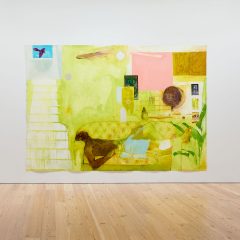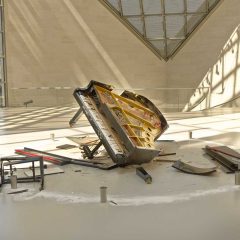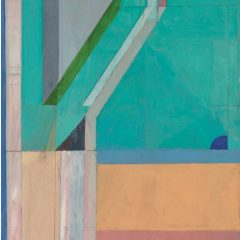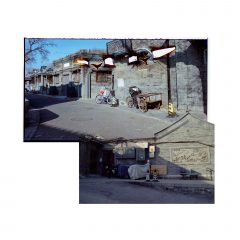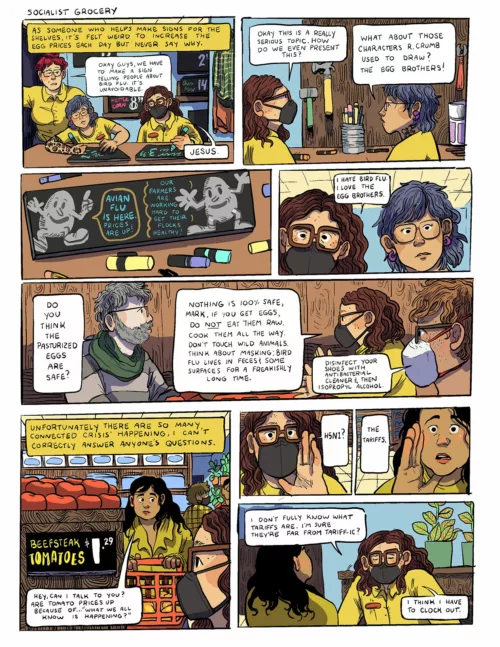It was rather ominous to see, a few weeks ago, a group of twelve wrapped sculptures populate the courtyard of Somerset House (a neoclassical building in Central London that once housed The Royal Academy and now is home to The Courtauld Institute and various art events). Ominous because their creator, Ai Weiwei, had himself been under wraps, imprisoned by the Chinese police and not heard from since the beginning of April (recently, he has been allowed a a visit from his wife). Circle of Animals/Zodiac Heads is both the first contemporary art installation in the historic courtyard and the first outdoor public installation by the Chinese artist. The installation (and current events) highlights the artist’s challenging relationship with his native culture.
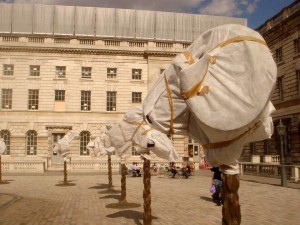
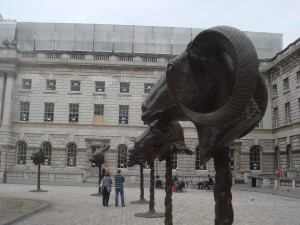
The twelve bronze heads representing the animals of the Chinese Zodiac sit on stands looking like knotty twisted roots running into the ground. The sculptures are a re-creation of those that were once part of the fountain-clock of the imperial palace (called Yuanming Yuan. The palace, today, is in ruins, sacked by Europeans in the 1860s. Some of the original heads have gone up for auction, others have been lost. Weiwei engages with the ideas of cultural heritage and its value, both in its lack of preservation in China as well as its migration around the world and its loss of meaning.

The Somerset House installation is the latest in a world tour (also on display in New York at the Grand Army Plaza until July 15) and marks the 3-prong presence of the artist in London this past year, including a small feature of recent work (including the vases below) currently at Lisson Gallery and the recently concluded installation at Tate Modern.
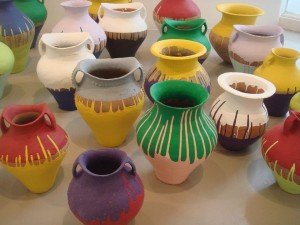
Lisson has chosen to vociferously support Weiwei, draping a large banner over one of their buildings with the artist’s likeness and the address of the website FreeAiWeiwei.org. They also plastered a street corner with posters inscribed with quotes from Weiwei about liberty and creativity (which they give out for free); created a montage of recent news articles about his imprisonment; and set up a computer in the gallery following all recent tweets about the artist.
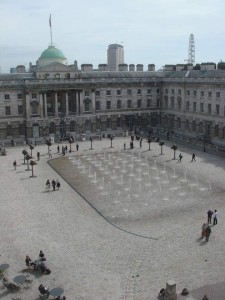
But it’s the public art installation at Somerset House that resonates most with Weiwei’s absence. The fountain installation resurrects a lost Chinese monument and confronts its European origins (the original heads were made by Jesuit priests). The re-creation of the fountain harkens to the delicacy of the lives of artifacts over time, and to the fragility of human existence no matter the regime. And it seems rather fitting that it is the animals of the zodiac represented in the installation, imparting a certain element of symbolism and fate which denote a greater presence beyond us all in this universe.
Circle of Animals/Zodiac Heads will be at Somerset House until June 26. Lisson Gallery’s Weiwei show runs until July 16.


